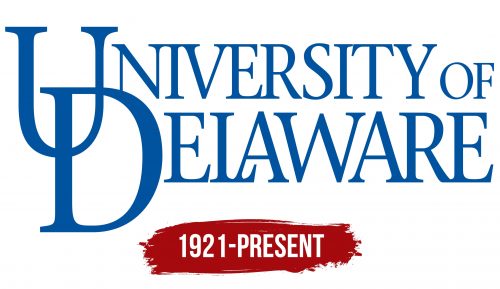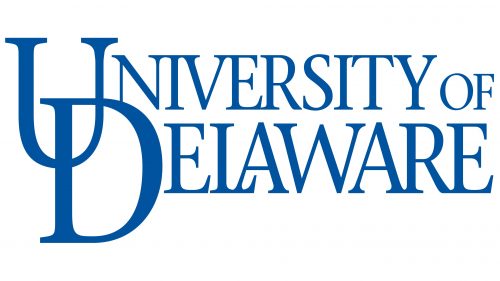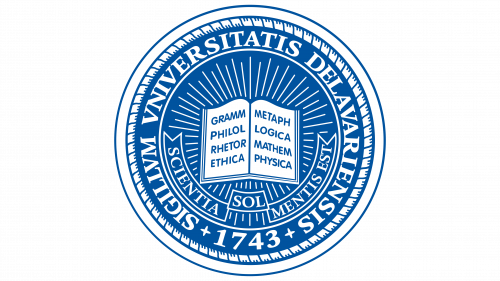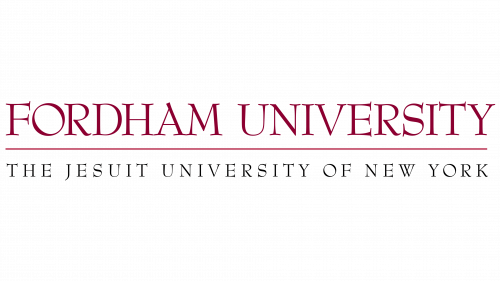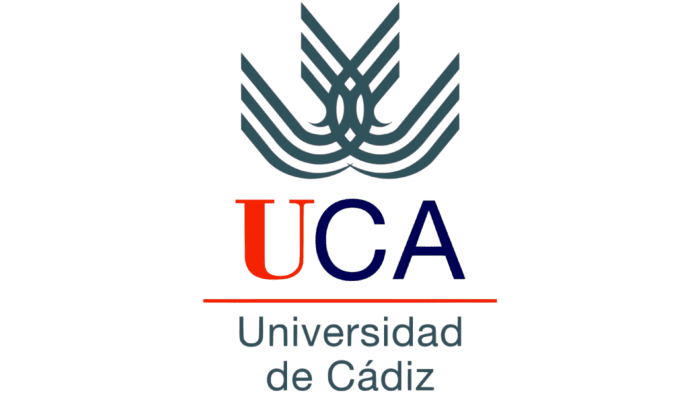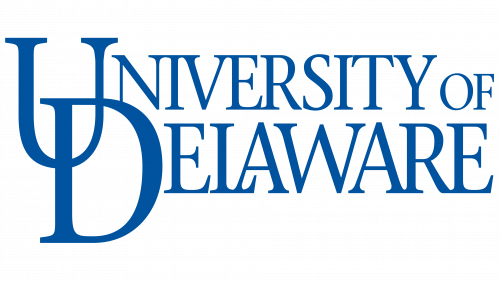 University of Delaware Logo PNG
University of Delaware Logo PNG
The University of Delaware logo is an example of simplicity and clarity. It concisely conveys the essence of the educational organization, combining strictness with elegance. The logo features minimalism, successfully paired with originality and depth of information. The color scheme is restrained, without unnecessary details and embellishments. The white background and light blue letters that make up the university’s name look fresh and modern.
The logo is created using superscript lettering, where the letters are arranged in two rows with minimal spacing between them, ensuring ease of perception. Straight lines and clear geometry, along with the presence of serifs on the letters, give the logo dynamism. Notably, the logo has maintained relevance for many years, an important achievement in developing the university’s identity.
University of Delaware: Brand overview
The University of Delaware has over 250 years of history, beginning during America’s colonial era. As one of the oldest universities in the country, its past is deeply entwined with the growth of higher education in the country.
The Presbyterian pastor Francis Alison established a tiny private school in New London, Pennsylvania, in 1743. This institution, sometimes called the “Free School,” was the model for the University of Delaware. Alison was a well-known teacher in his day, and his institution soon earned a reputation for offering top-notch instruction.
The school relocated to Newark, Delaware, in 1765 and changed its name to the Newark Academy. This move was a turning point in the institution’s history, setting the stage for its future growth in Delaware.
Thomas and Richard Penn granted the Newark Academy a colonial charter in 1769, enabling it to award degrees. The academy was still known as Newark Academy until 1833, although this event essentially converted it into a college.
The Newark Academy was a key player in the American Revolution. James Smith, George Read, and Thomas McKean—three signers of the Declaration of Independence—were among the many alumni and faculty members who participated in the independence movement.
The Delaware General Assembly approved a bill renaming the Newark Academy Newark College in 1833. Recognizing the college’s official status as a higher education institution was a milestone in its development.
Delaware granted Newark College a new charter in 1843, one hundred years after the Free School’s inception. This charter fortified the college’s relationships with the state and increased its authority.
The college faced difficulties during the Civil War, which lasted from 1861 to 1865. Numerous past students and alumni participated in combat on both sides. Even with these challenges, the college continued its operations during the war.
The Morrill Act, which promoted the establishment and growth of agricultural and technical colleges, started providing money to the college in 1867. As a result, the college enhanced its infrastructure and offered more programs.
Women were first admitted to the college in 1870, but not on the same terms as men. It took until the 20th century for women to attain complete equality in their access to education.
A key development in the school’s history occurred in 1921 when Newark College changed its name to the University of Delaware. This modification reflected the institution’s expansion and progress, providing a large selection of academic programs by then.
The Women’s College of Delaware and the University of Delaware combined in 1923, greatly expanding the latter’s student body and academic offerings.
The university expanded quickly in the years following World War II. The increased enrollment of G.I. Bill-aiding veterans resulted in campus growth and the development of additional academic offerings.
The institution’s expansion continued through the 1950s and 1960s. New programs and faculties were established, and new structures were built. Particular emphasis was placed on the development of research activities.
Despite maintaining many aspects of a private institution, the university was acknowledged as the state’s flagship university in 1970.
The 1980s and 1990s were characterized by even more growth. International relations were bolstered, new research centers were established, and student exchange initiatives were broadened.
The institution maintained its emphasis on innovation in research and education well into the twenty-first century. Opportunities for online learning increased, and new multidisciplinary programs were introduced.
The university greatly increased its capacity for research throughout the 2000s. With its founding, the Delaware Biotechnology Institute emerged as a hub for cutting-edge biological and biotechnological research.
2007, the institution introduced the “Path to Prominence,” an ambitious strategy to improve research activity and academic standards.
The Interdisciplinary Science and Engineering Laboratory opened its doors in 2009 and has since grown to become a center for cutting-edge research in biomedical engineering, nanotechnology, and alternative energy.
The institution started the “Global Initiative” program in 2011 to expand its global reach and enroll more international students.
2013 was a noteworthy year for innovation at the college. The Horn Program in Entrepreneurship was founded to assist student businesses and entrepreneurial endeavors.
Memorial Hall, a historic university structure, underwent extensive renovations that were finished in 2015, converting it into a contemporary hub for student life.
In 2016, the institution launched the largest fundraising drive in its history, the “Delaware First” campaign, to raise $750 million to develop academic programs and research facilities.
The institution opened the state-of-the-art Interdisciplinary Science and Engineering Laboratory for engineering students in 2017.
2018, the College of Health Sciences constructed a new facility, greatly increasing the university’s medical instruction and research capacity.
The institution introduced the cutting-edge “FinTech Innovation Hub” program in 2019 to train students for professions in the quickly expanding financial technology industry.
2020 was a year of adjusting to new circumstances. The institution swiftly adopted a hybrid approach that blended offline and online learning.
In 2021, the university unveiled “The Future R1,” a new project that further solidified its standing as a preeminent research school.
The University of Delaware is represented by the Delaware Fightin’ Blue Hens, a team that competes in NCAA Division I across various sports, including football, basketball, and soccer. The Fightin’ Blue Hens are well-regarded for their athletic achievements, particularly within the Colonial Athletic Association, where they have a strong presence. The university is dedicated to supporting its student-athletes, ensuring they have the resources to succeed academically and athletically.
The university maintained its top spots in national rankings during this time, especially in engineering, business education, and chemical sciences. As part of its global outreach, the institution increased staff and student exchange programs and forged alliances with other academic institutions worldwide.
The university enhanced its research capabilities, emphasizing multidisciplinary initiatives and breakthroughs. The institution made a concerted effort to improve educational accessibility by growing its student financial aid offerings.
The university has a long history of producing notable alumni, including business executives, scientists, politicians, and artists. Joe Biden, the 46th President of the United States, is one of the most illustrious alumni.
Meaning and History
What is University of Delaware?
The university is known for its extensive academic offerings, offering various undergraduate and graduate degrees in several fields, including business, engineering, agriculture, arts, and sciences. Public policy, physical therapy, and chemical engineering courses are particularly well known. The main campus reflects its long history and modern purpose through a mix of old and modern buildings. With many research institutes and resources, the university is known for its emphasis on research. UD’s Blue Hens athletic teams compete in the Colonial Athletic Association.
1921 – today
The University of Delaware logo was designed with versatility, ensuring it could be effectively used across various mediums—from apparel to educational materials. Regardless of the background, the blue letters consistently maintain their recognizable hue.
The logo’s design features an interesting choice: a three-dimensional font arranged in two rows, creating a visually appealing image. The interlocking of the first two capital letters draws particular attention, adding uniqueness and refinement to the mark. This “UD” monogram brings elegance and structure to the university’s name. The emblem contains no images or illustrations, focusing entirely on the name itself. It is bold and easily recognizable, making it stand out and memorable.
Blue symbolizes trust, wisdom, and confidence, while the intertwining letters emphasize the unity and connection between the university’s past, present, and future. This approach makes the emblem relevant and modern while preserving respect for the institution’s longstanding traditions.
The Seal
The color palette of the University of Delaware seal and logo is fully aligned, emphasizing the unity and continuity of traditions. The chosen blue and white tones symbolize the foundation of education, respect for tradition, and a neutrality that is perceived positively.
The university seal is circular, with four internal contours repeating its shape. These contours include simple geometric lines and ornamental elements, creating a frame that adds to the seal’s formality. The central element of the seal is an open book, symbolizing knowledge, education, and enlightenment. Rays of varying lengths radiate from the book, representing the power and influence of knowledge on the mind.
The seal’s textual element includes the Latin inscription “Scientia Sol Mentis Est,” which translates to “Knowledge is the light of the mind.” Using Latin expressions in American educational institutions is common, highlighting education’s wisdom and deep traditions.
The seal’s book pages indicate the university’s fields of study, founding date, and name. Interestingly, the seal references the “Free School” creation at Francis Alison’s house, marking the beginning of the university’s history. Today, it is one of the leading educational institutions in the world, offering over 300 programs and attracting more students each year. The university also recognizes and rewards its successful alumni, underscoring its commitment to fostering and supporting talent.
